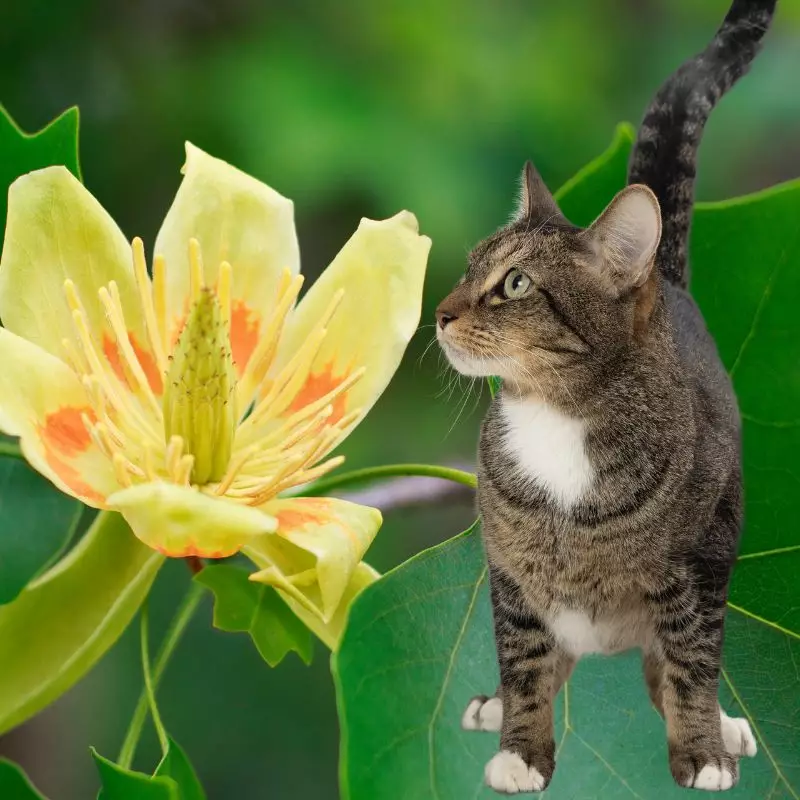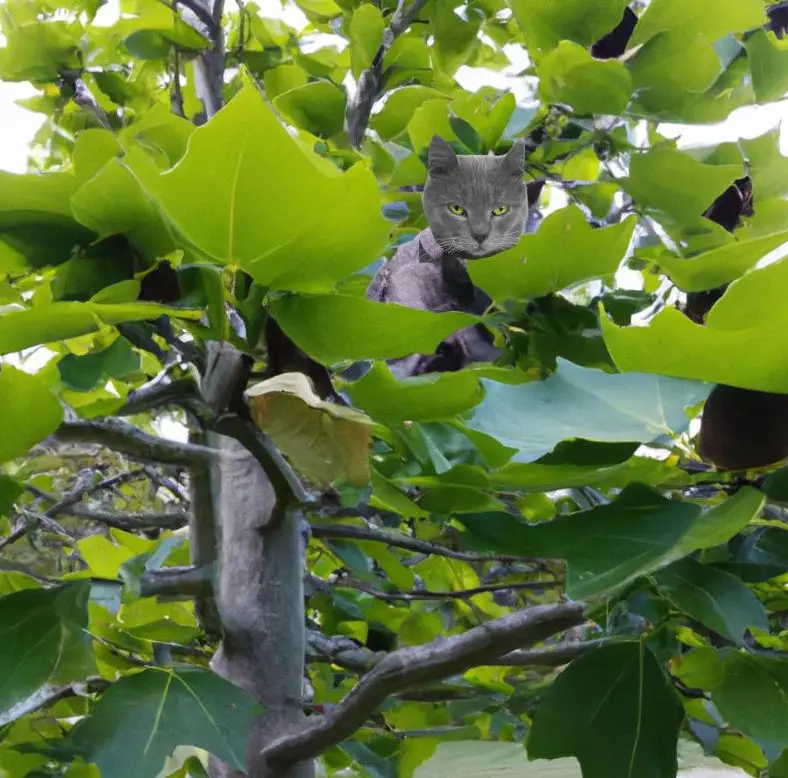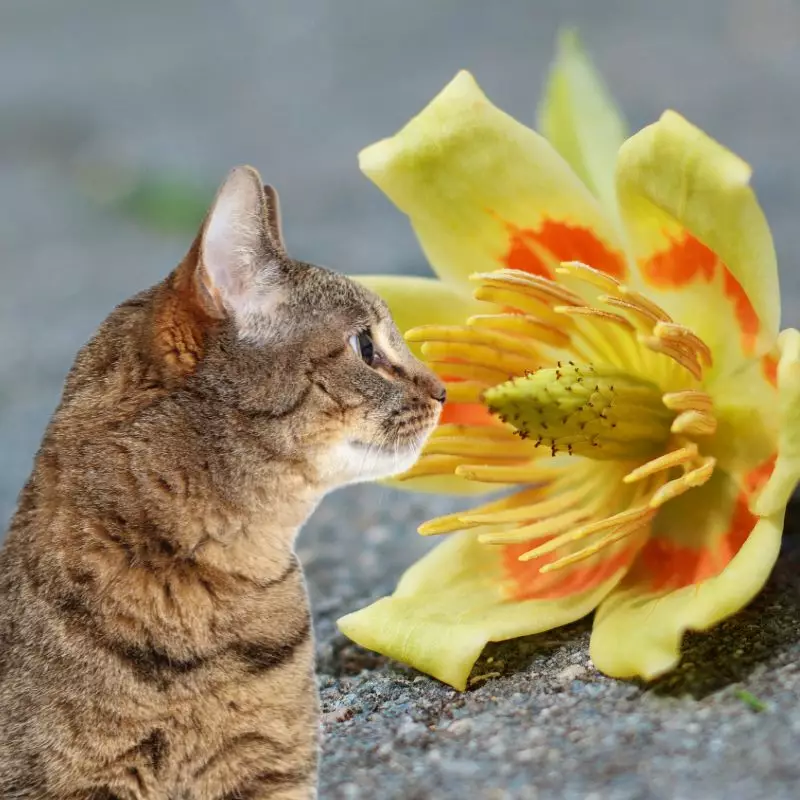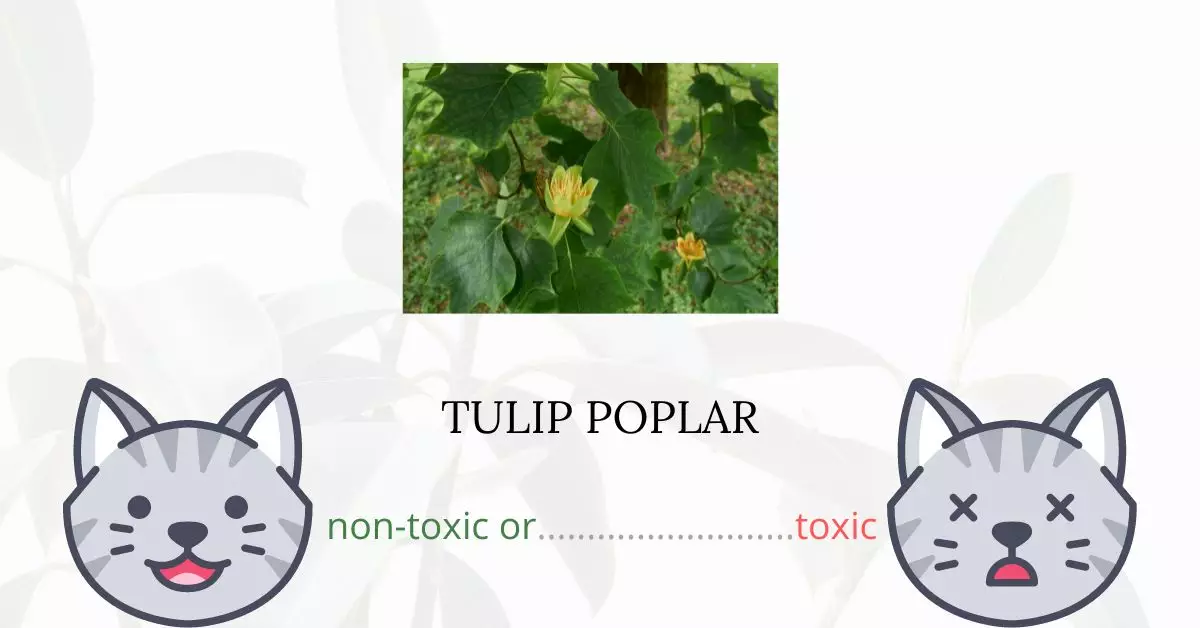No, tulip poplar or yellow poplar is not toxic to cats. This deciduous tree contains no elements harmful to our feline companions. Furthermore, the ASPCA has listed tulip poplar among its non-toxic plants for cats.
This article was meticulously crafted in collaboration with a team of experienced DVMs (doctors of veterinary medicine). Their invaluable input, combined with our extensive research from high-authority websites like the ASPCA and PetMD, ensures that we offer accurate and up-to-date information on the potential risks various plants, such as the Tulip Poplar, pose to cats.
Nonetheless, even if a plant is considered safe, it’s always prudent to supervise your cat around it and discourage unnecessary interactions.
Can Cats Eat Tulip Poplar or Yellow Poplar?

It is not recommended for cats to eat any parts of tulip poplars but if they accidentally nibble a small portion, it wouldn’t hurt them. Because tulip poplar does not have poisonous elements, your cat may safely touch, lick, or ingest a tiny portion of this plant.
Cat owners should be most concerned about their cats’ excessive plant consumption. Cats may experience indigestion as a result of eating too much vegetation. In addition to other gastrointestinal problems, it may cause vomiting and diarrhea.
Since these symptoms will go away once the cat’s body has gotten rid of the plant matter from his stomach, they might not be a cause for concern.
What is Tulip Poplar or Yellow Poplar?

Scientifically known as Liriodendron tulipifera, Tulip Poplar is a native deciduous tree that may grow 90 to 120 feet tall. Its attractive, tulip-like flowers and greenish-yellow heartwood are what give it its name. The tulip poplar tree has four-lobed, alternate leaves with a smooth margin and palmate veins.
Tulip poplar has other common names including tulip tree and yellow poplar. The tree produces a mass of overlapping samaras that mature in the late fall and then separate. Mature trees can have trunks that are 4 to 6 feet in diameter and rise normally in a columnar fashion without any lower branches.
Even though the leaves in the fall can turn brilliant to golden yellow, they typically drop off too soon. Numerous cultivars of this plant, including miniature varieties, are available. Tulip poplar trees grow all over North Carolina. They flourish in lower mountain coves and near streams in deep, moist soil.
Keeping Cats Away From Tulip Poplar or Yellow Poplar

There are several houseplants that you can pick from if you want to deter cats from your plants. For instance, cats tend to avoid and detest the scent that eucalyptus and lavender plants emit.
You might also think about growing cat grass; it’s a simple plant with a texture that resembles real grass. This method is also a great way to occupy your cat for hours so that they lack the motivation to play with the rest of your plants.
You can also cat-proof your plants by using transparent plant saucers. Place your plant upside-down, covering the entire soil base, with a hole cut out in the middle to go around the trunk or base of the plant.
Ensure that your gardens and yards are kept tidy. Cats frequently mark their territory by peeing there. As a result, they keep coming back to that location. Wash their scents away with water and odor-neutralizing soap.
Plants to Avoid For Your Cats
If you are a cat owner and unsure if the plants growing in your yard are harmful to your cats, check out this list of toxic plants for cats. You can also check our list of non-toxic plants for cats.





